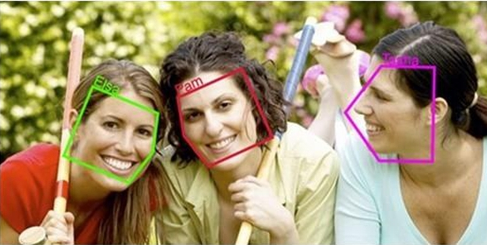Recently, the Prosecutor's Office of the State of Rio de Janeiro in Brazil made a request to the court to set up biometric systems for identification through fingerprints, iris, palm prints, etc., at stadiums in Rio State, with the purpose of preventing fans who had records of violence in previous matches. Enter the stadium.
Biometrics is getting better, who can win the championship in one fell swoop?
With the advent of the intelligent era, biometrics technology has received widespread attention for its advantages such as safety, reliability, uniqueness, and convenience, which are incomparable with traditional identification methods. Whether it is fingerprint recognition, face recognition, palm vein recognition, or iris recognition, colorful recognition applications have entered our lives.
Fingerprint recognition is the best, but it is easy to counterfeit
"Each fingerprint is unique and unchanged for life" fingerprint recognition is currently the most widely used recognition technology due to its low cost, small size, and convenient collection. However, in reality, risks caused by fake fingerprints of others happen frequently.
In a prison in Inner Mongolia, the prisoner cut off the guard's right finger and used the cut off finger to open the fingerprint recognition access control system... and finally successfully escaped from the prison. In June 2014, there was an incident in Henan where a gunman used an artificial fingerprint film instead of an exam. According to statistics, about 5% of people cannot be identified because of their shallow fingerprints. The famous singer Li Zongsheng also lost his fingerprints after playing the guitar and could not open the door. Because fingerprints are easy to remain, this has become an important direction of criminal investigation, and it also brings security risks to normal use.

Events like this show that fingerprint recognition technology, as a mature and widely used technology, still has its own security vulnerabilities that are difficult to overcome.
Voice recognition is getting better, and the applicable environment is limited
Voice recognition is a simple and efficient non-contact biometric technology, and it can remotely authenticate and log in, such as making a phone call. It has low cost, convenient sample collection, high user acceptance, and a world market share of up to 15.8%. However, speech recognition has some inherent shortcomings: each of our voices may change due to physiological, pathological, psychological and other reasons, or it may be distorted in the case of simulation, camouflage, environmental interference, and mixed speakers. Using tuner, voice changer, mobile phone software, etc., it is easy to imitate the voice.
Face recognition is in the limelight, and it is difficult to distinguish the authenticity of plastic surgery
With the improvement of computer technology and optical imaging technology, face recognition has been applied to campus access control and attendance management; financial institutions remote real-name account opening, credit card remote account opening, VIP customer identification and other services; securities company remote real-name account opening; tourist attractions Ticket management, personnel sign-in for large-scale occasions; security checks at railway stations, subways, and airports.
However, some female friends often complain that they can't recognize it if they put on makeup and change the hairstyle. In addition, twins bring a lot of trouble to face recognition. And today, with the proliferation of plastic surgery, there are considerable "blind spots" in face recognition technology. In some wearable applications, due to the complex face recognition algorithm, it is difficult to easily miniaturize and reduce the cost of the terminal.
Iris recognition has no dead ends, but the price is high and cold
In Hollywood blockbusters, there are often cool scenes of opening a secret room or safe by scanning the retina of the eye. As one of the most secure biometric methods, iris recognition has almost zero rate of misrecognition and rejection. However, the cost of iris recognition technology is relatively high, and it also requires a sophisticated camera. Therefore, the degree of popularity is low, and it is currently mostly used in confidential institutions and some high-end equipment that require high security performance.
A rising star in vein recognition, with unlimited potential
Some people say that “in modern society, creating a fake fingerprint is easy and the price is not highâ€. Not only that, it’s not difficult to fake portraits and voiceprints. Vein recognition technology recognizes the biological characteristics inside the human body, so there is no need to worry about leakage in daily life, and no need to worry about being copied. The feature of vein recognition has been internationally recognized as unique and comparable to that of the retina. When its rejection rate is less than 1 in 10,000, the recognition rate can be less than 1 in 100,000. Vein recognition is a real living body recognition, which can be recognized only when the human blood is flowing normally. In addition, the cost of vein recognition technology is lower than that of iris recognition; in terms of interaction, vein recognition is very friendly and in line with people's usage habits.
At this stage, as an emerging recognition technology, although the vein recognition function is not widely used in the market, it has an undeniable competitive advantage. For some time to come, this advantage will be maintained.
Ceramic Switch,Ceramic Light Switch,Ceramic Rotary Switch,Alumina Ceramic Switch Block
Yixing Guangming Special Ceramics Co.,Ltd , https://www.yxgmtc.com